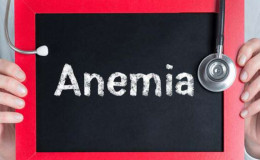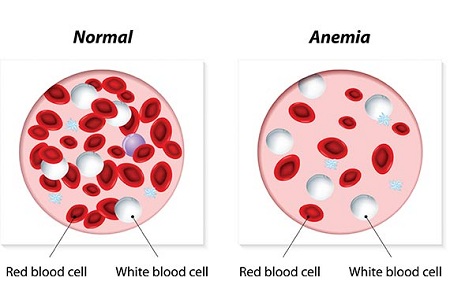The Incidence of Anemia Is Rising In USA. See Its Causes, Types, Symptoms, Diagnosis and Treatment

Anemia, also known as iron-poor blood, is a common disorder that occurs when a deficiency in the blood cells obstruct the delivery of oxygen in all parts of the body.
Anemia, also known as iron-poor blood, is a common disorder that occurs when a deficiency in the blood cells obstruct the delivery of oxygen in all parts of the body.
Anemia is the most common blood issue in the United States. The condition affects about 3.5 million Americans affecting mostly women, young children and people with chronic diseases.
It can be temporary or long-term, and it can range mild to severe.
What Exactly is Anaemia?
Anemia is simply the term used in the condition when there's less amount of red blood cells (RBCs) or hemoglobin in the blood.
Hemoglobin is a major part of red blood cells that binds oxygen. The cells in your body will not get enough oxygen when the red blood cells or your hemoglobin is abnormally low.

There are many types of anemia. They are different in their causes and treatments.
- Iron deficiency anemia
- Vitamin deficiency anemia
- Anemia of chronic disease
- Aplastic anemia
- Anemias associated with bone marrow disease
- Hemolytic anemias
- Sickle cell anemia
- Thalassemia
- malarial anemia
The most common type of anemia is caused due iron-deficiency which is treatable with diet changes and iron supplements.
Causes of Anemia and Factors Responsible
There are more than 400 types of anemia that are divided into three major groups:
- You body unable to make enough red blood cells.
- Loss of red blood cells due to bleeding.
- Your body destroys red blood cells.
There are certain factors responsible for anemia. They are as follows:
- Some types of anemia are hereditary; infants may be affected by the time of birth.
- Women after childbirth are more prone to iron deficiency because of blood loss from menstruation and due to the increased blood supply demands during pregnancy.
- Poor diet and other medical issues like cancer, diabetes, kidney issues, and HIV/AIDS may be responsible for anemia in adults.
Signs and Symptoms
Anemia signs and symptoms may vary depending on the cause of it. People who are anemic generally experience fatigue.
It's normal to feel tired after a long busy schedule or after a heavy exercise. But if you are anemic you feel weary after shorter time periods as your body's cells are starved or oxygen.

As the condition gets worse, your body can experience noticeable physical changes. The skin could become pale, nails brittle and cuts may take a longer time to stop bleeding.
Some other symptoms associated with anemia are:
- Irritation
- Weakness
- Shortness of breath
- Cold hands and feet
- Irregular heartbeat
- Dizziness
- Cold hands and feet
- Chest pain
- Lack o concentration
- Sexual dysfunction
Well, the above-mentioned symptoms are very light at first if the condition is mild or moderate. The condition worsens with time.
Diagnosis and Treatment
A Complete blood count (CBC) is a blood test used to measure all the components of your blood.
A medical and family history is also an important factor addressed. It indicates that you become anemic due to some kind of illness or a genetic condition.

Other blood tests can play a major role to check the iron, red blood cells or hemoglobin in particular.
Simply, physical examination can tell whether your breathing or heartbeat has become irregular due to anemia.
Here is a video explaining five steps to treat anemia naturally:
There is a range of treatment methods for anemia. All the treatment method works increasing red blood cell count, in turn, increasing the amount of oxygen supply in the body parts.
Treatment methods solely depend on the type and cause of anemia. Some of the treatment methods are listed below:
- Vitamin deficiency anemia: Treatments include dietary supplements and B-12.
- Iron deficiency anemia can be treated with special dietary changes. If the condition is due to loss of blood, it should be immediately monitored and stopped.
- Thalassemia: Supplementation of folic acid, bone marrow transplant, blood transfusion and removal of the spleen can be the treatment option.
- Sickle cell anemia: Treatment methods include oxygen therapy, pain relief, and intravenous fluid. Certain antibiotics can be taken under doctor's prescription.
- Hemolytic anemia: Patient should immediately visit a specialist as soon as possible. Plasmapheresis or blood-filtering might play a key role in some cases.
Hence, it's better to adopt certain preventive measures to maintain healthy body and mind. Taking a balanced diet, daily exercise, and meditation can be an important step to avoid any sort o complication in future.
